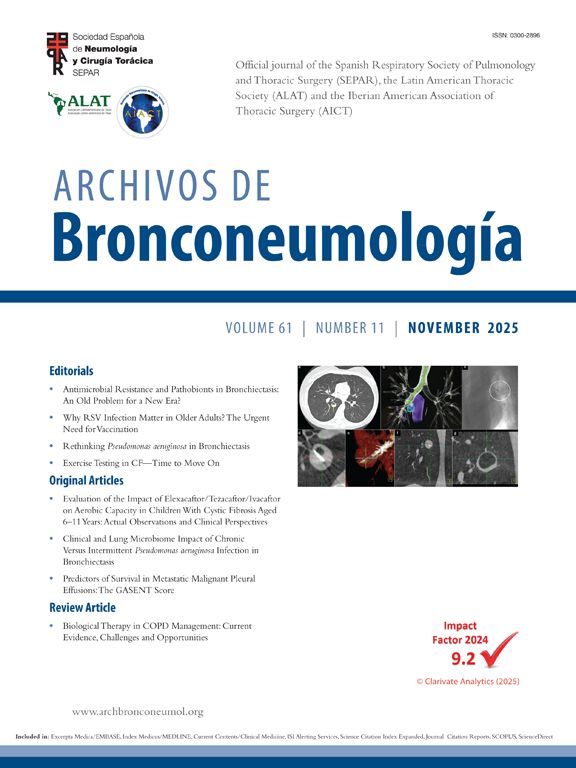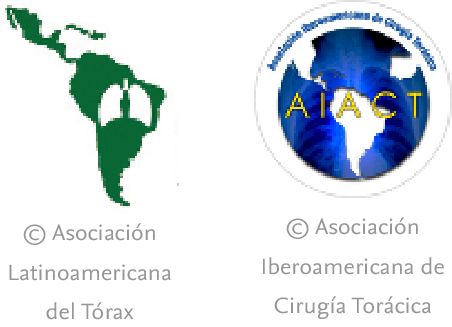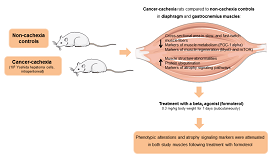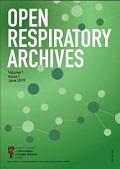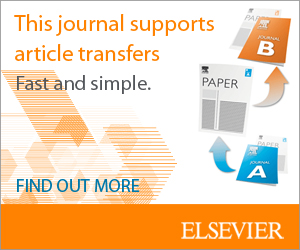In August, the United States Food and Drug Administration (FDA) approved brensocatib, a dipeptidyl peptidase inhibitor for use in bronchiectasis patients. The landmark approval marks a historic breakthrough in the field: the first regulatory authorization of a drug for a disease that has burdened patients for more than 200 years. Brensocatib is an oral, once daily, reversible inhibitor of dipeptidyl peptidase which blocks the activation of neutrophil elastase and other proteases known to drive bronchiectasis exacerbations and lung function decline [1]. Brensocatib was studied in the ASPEN trial, a phase 3, double-blind, placebo-controlled trial in which 1721 patients (41 of which were adolescents) from 390 sites across 35 countries were randomized to either brensocatib10mg, 25mg or placebo. Inclusion criteria included a clinical history of bronchiectasis (with confirmatory chest computed tomographic scan findings) and at least two exacerbations (or just one for adolescents) in the year prior to screening. Subjects received the investigational drug or matched placebo for up to 52 weeks. The primary efficacy end point was the annualized rate of adjudicated bronchiectasis exacerbations [2] during the treatment period. Secondary efficacy endpoints included time to first exacerbation, the percentage of patients remaining exacerbation-free at week 52, change in post bronchodilator forced expiratory volume in 1 second (FEV1), annualized rate of severe exacerbations, and (for adults only) the change from baseline in the score on the Respiratory Symptoms domain of the Quality of Life-Bronchiectasis questionnaire at week 52.
Brensocatib achieved its primary efficacy endpoint, demonstrating approximately 20% reduction in the annualized rate of bronchiectasis exacerbations in patients receiving the active drug (rate ratio in the 10mg and 25mg brensocatib groups, as compared with the placebo group, were 0.79 (95% CI, 0.68–0.92; adjusted P=0.004) and 0.81 (95% CI, 0.69–0.94; adjusted P=0.005), respectively). Since the release of these findings, a common question has emerged: “Is a 20% reduction of exacerbation frequency clinically meaningful?” This question should not be approached with the assumption that a single therapeutic agent will define the future of bronchiectasis management. As the vicious vortex dictates [3], bronchiectasis is a complex pathobiological interplay involving aberrant mucus and ciliary function, chronic microbial infection, and immune dysfunction involving a pro-inflammatory state mixed with immune deficiency. Expecting one drug to address all facets of the multifactorial pathology is not only unrealistic but scientifically unsound. The objective must be to identify novel therapeutics that complement brensocatib, working synergistically to achieve comprehensive disease control. This multi-modality strategy has long been the standard for other chronic diseases, such as congestive heart failure, and bronchiectasis warrants an equally nuanced approach.
Brensocatib is a fundamental agent to help alter the disease trajectory of bronchiectasis, but it must be integrated into a broader regimen that includes muco-active agents and airway clearance techniques. For patients already receiving chronic macrolide therapy, brensocatib demonstrated additional benefits, yielding a further reduction in exacerbation risk relative to macrolide use alone [4]. Therefore, brensocatib holds promise as a co-therapy with maintenance macrolides and as an anti-inflammatory therapy option for patients with nontuberculous mycobacterial infections, particularly when chronic macrolide monotherapy is contraindicated.
In patients with chronic Pseudomonas aeruginosa airway brensocatib has shown efficacy in reducing exacerbations [4]. The potential synergy between brensocatib and inhaled antibiotics remains to be formally evaluated, but based on the vicious vortex framework, such a combination is both logical and defendable.
Additional therapeutic agents targeting the epithelium and mucus modulation, when used alongside dipeptidyl peptidase inhibition are likely to generate additive effects. While such drugs are developed and formally studied, clinicians must not delay in adopting brensocatib. We must offer this therapy to our patients, engage in post-marketing clinical trials, and accelerate the acquisition of real-world evidence.
The ASPEN trial was conducted following a series of disappointing studies involving inhaled antibiotics, each of which failed to meet its respective primary endpoints. However, meta-analyses and subgroup evaluations have demonstrated efficacy within specific patient populations [5]. Against this backdrop, the achievement of the primary efficacy endpoint in the ASPEN trial is overwhelmingly gratifying. Beyond its topline success, the ASPEN trial revealed a novel efficacy signal within its secondary outcome measures, offering fresh insights into therapeutic potential and reinforcing its clinical relevance. Brensocatib lessened the extent of lung function decline typically observed in bronchiectasis patients. At week 52, the postbronchodilator FEV1 declined from baseline by a mean (±SE) of 62±9ml in the placebo group and 50±9ml in the 10-mg brensocatib group, but only 24±10ml in the 25-mg brensocatib group (least-squares mean difference of 38ml between brensocatib 25mg and placebo, 95% CI, 11–65; adjusted P=0.04). This is unprecedented in bronchiectasis and previously thought to be impossible due to the permanent distortion of the airways. It suggests that active inflammation mediated by neutrophil elastase contributes to lung function decline and is modifiable. Again, a common question emerges, “is this clinically relevant?” If brensocatib can reduce the rate of lung function decline in bronchiectasis to match the rate seen in healthy individuals year after year, then the answer is yes. But to truly reveal its long-term potential, continued use and extended evaluation are essential to confirm whether the benefits seen over 52 weeks can be consistently sustained year after year. The U.S. FDA will dictate dosing of the drug and may even make both doses available. But from this author's standpoint the lung function data seen in the 25-mg group makes this dose very compelling.
The FDA granted priority review designation to brensocatib for the treatment of bronchiectasis. This designation reflects the agency's recognition there is a high unmet need in this condition, that there are no alternatives, and that brensocatib may offer significant improvements in reducing pulmonary exacerbation rates over existing therapies. The European Medicines Agency (EMA) will review brensocatib in early 2026 and individual European countries will then follow with their individual reviews. At this time, it reasonable to expect that brensocatib will be approved throughout Europe as in the U.S. The next hurdle to address will be balancing cost with efficacy and long-term outcomes. In addition to reducing pulmonary exacerbation rates and stabilizing lung function decline, brensocatib 25-mg dosing led to a 8.58±0.76 point improvement in the Respiratory Symptoms domain of the Quality of Life-Bronchiectasis questionnaire (versus 4.81±0.75 points in the placebo group), reduced severe exacerbations, and demonstrated safety. Serious adverse events were similar across all groups. Bacterial infections were not observed at the 25-mg dose over the 52 weeks of exposure. Mechanism of action adverse effects such as hyperkeratosis were few, mild, similar across groups and resolved. Only one case of hyperkeratosis led to discontinuation of brensocatib but also resolved. Thus, brensocatib demonstrates a favorable safety profile and robust clinical efficacy, with benefits to patients’ quality of life. It significantly reduces the frequency of exacerbations and, perhaps most critically, may alter the trajectory of disease progression through its apparent protective effect on lung function. These outcomes translate into substantial healthcare cost savings, not in isolation, but cumulatively, with synergistic rather than merely additive impact. While the cost of novel therapeutics is frequently scrutinized, it is far more challenging to quantify the economic benefits of enhanced quality of life, preserved pulmonary function, and fewer hospitalizations or acute events. For the field bronchiectasis to advance in parallel with other respiratory conditions, strategic investment (both financial and intellectual) into drug development is imperative. Our patients’ well-being depends on it.
CRediT authorship contribution statementPamela J. McShane conceptualized the editorial theme, performed critical appraisal of relevant literature and drafted the editorial. All revisions and final approval were completed by Dr. McShane.
Declaration of generative AI and AI-assisted technologies in the writing processTools were utilized to screen for grammatical and syntax errors. However, the intellectual content, ideas, and conclusions presented are entirely the author's own.
FundingThe author declares that no funding was involved in this work.
Conflict of interestPamela J. McShane served as site principal investigator for Insmed's phase 3 ASPEN Trial of Brensocatib and Boehringer Ingelheim's phase 2 Airleaf trial of BI 1291583 (Verducatib). Dr. McShane also served on the steering committee for the Airleaf trial.

